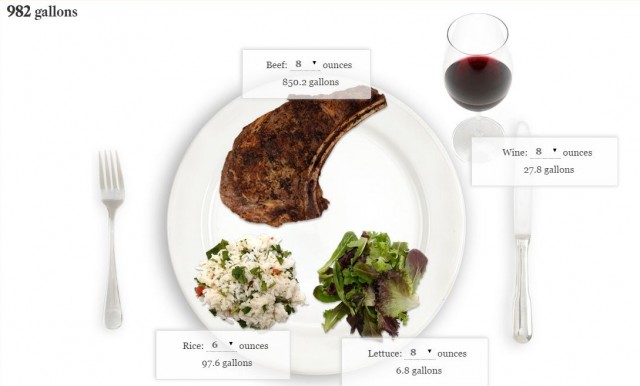CORRECTION: This article originally stated that soy milk was the most water-intensive drink. The value, as initially listed by the LA Times, was for the soybean ingredient, not the actual final soy milk product. Soy milk actually has a smaller water footprint than most other processed drinks.
Looking to minimize your water footprint at the dinner table? How about a wholesome meal of eggs, carrots, potatoes and beer?
Nutritious and downright water efficient (although perhaps not age-appropriate for the whole family).
According to a new Los Angeles Times data analysis, the raw ingredients in that meal require less water to produce than almost any other combo plate of a protein, a fruit/veggie, a starch and a beverage. Use the site's new interactive tool to build a combination of meals and see how much water is needed to produce California's most commonly consumed foods (sources and methodology listed at the bottom of the graphic).
Now in its fourth year of drought, California has only a fraction of its once-normal water supply. And as officials continue to wrestle with how best to cope with less, the agriculture industry, which uses about 80% of the state's water supply, has come under increased scrutiny.
